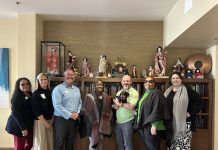By Assemblymember Marie Waldron
California’s high-speed rail project keeps chugging along, despite cost overruns, construction delays, and forgotten promises.
In 2008, voters passed Prop.1A, a $9.5 billion bond measure to help finance highspeed rail. Promises included keeping costs under $40 billion, the state’s maximum investment would be 30%, funding from federal, private and local sources would pay the rest.
Additional taxpayer subsidies were prohibited, and construction could not begin until all revenues were in hand for the first segment.
But never mind all that. Construction began without the promised funding, and new reports show that the initial segment, a 171 mile stretch between Bakersfield and Merced, will cost $35 billion, exceeding available revenues by $10 billion, and almost equaling the projected cost of the entire Los Angeles to San Francisco project when it was originally proposed. Completing the project is now expected to cost $128 billion, and that amount is likely to rise as well.
The train from the Bay Area to Los Angeles was supposed to be up and running by 2020 – now we’ll be lucky if the Bakersfield to Merced segment is operational by 2030. And this is just in the mostly rural, Central Valley portion of the rail line – which will attract the fewest riders.
The state simply doesn’t have the funding to complete the high-speed rail project, especially with our current $22.5 billion budget deficit and the likelihood that these deficits will continue for years. Given the history of broken promises and cost overruns, would voters approve another bond measure? Or is it likely Congress would approve billions in federal funds, and saddle the entire country with the cost of California’s mismanagement and failure?
We must cut our losses and derail this boondoggle now. If we don’t, high-speed rail will become the costliest train wreck in history.
Assemblymember Marie Waldron, R- Valley Center, represents the 75th Assembly District in the California Legislature, which includes the cities of Poway, Santee, portions of the city of San Diego, and most of rural eastern and northern San Diego County.














